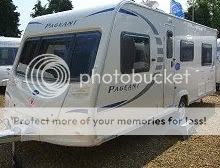Hello there. This is a good time of year to get a bargain, and your budget should get you lots of tent. As Val says, there are some basic decisions to be made about what will suit your needs....This comes up often so here is my standard list of things to consider;
1. Man made fabrics are much lighter and dry off quickly, but they cause condensation, and degrade in the sun so they don't last as long as cotton. Cotton canvas is more expensive, and bulky, but creates a comfortable climate to live in as it is breathable, and is not so badly affected by UV so it will alst 20+ years. You should be able to find good second hand frame tents (or small new ones) in your price range. Some makers have now created poly-cotton tents (to try and get the best of both) but these are costly and are mostly sold out right now.
2. Poles can be of fibre glass (light cheap but prone to splitting in high winds) so these are sometimes reinforced by an outer wrapping of woven fibres (trade name is Durawrap). Metal poles (steel or aluminium) are obbviously stronger, but heavier (esp steel). Metal alloy ppoles offer the best strength to weight ratio, and are flexible like fibreglass.Alloy poles tend to be reserved for tents used in extremes-mountain/winter activities, though Robens do some family sized tents with this technology (the "Dreamer " range) but again I think they are outside your budget.
3. As Val says, you also need to think about whether you want a fully sewn in groundsheet throughout the tent; most tents with this style go up inner first, which can leave you a bit vulnerable when putting up/taking down in wet weather e.g. Outwell Harford, Vango Diablo, Khyam/Campus Brekonridge. Some makers have now addressed this by producing models that go up outer first AND have SIG -e.g. Outwell Montana and Nebraska, Wynnster Pegasus. And some makes have created a different compromise with the "riser" groundsheet, which is loose but rises up the sides ofthe inner to cut out draughts.
Tents without a SIG are usually a bit lighter in overall weight, have the advantage of going up outer first, it is easy to separate a muddy GS and clean it at home. But there can be problems with creepy crawlies coming through the gap between flysheet and GS, and draughts, tho these are lessened if the tent has draught flaps/mudwall/valance along the bottom of the flysheet. You can get a separate footprint GS to go under SIG tents, to protect the SIG from soiling.
4. Tent shape and layout. Tunnels are usually the easiest shape to put up, but you need to make sure you guy up properly as they rely on guying for stability more than dome or frame shapes do. Domes can vary according to how the bedrooms are laid out (You might want to think about this if you are sometimes going to have guests with you...privacy etc). Frame tents give excellent head height throughout, and sometimes have a proper plastic-lined kitchen area inside too.
5. Overall pack size and weight of tent is important, depending on transport and storage facilities at your disposal, and how much other stuff you take. Frame tents tend to be heaviest and bulkiest, and those made from manmade materials are lighter and smaller.
So....if you have not fallen asleep yet...here are a few to think about that are in your price range.
Tunnels with riser groundsheets - Vango Oregon, Outwell Oregon 5 and Casagrande XL.
Tunnels with SIG&outer first - Outwell Montana, Outwell Nebraska (tunnel dome hybrid) Sunncamp Vario range, Coleman Columbus
Domes with SIG and inner first - Vango Diablo, Outwell Hartford, Khyam/Campus Breckonridge
Domes with loose GS& outer first - Vango Colorado, Wynnster Mercury
Domes with outer first and SIG - Wynnster Pegasus.
I have done a quick seach and all of these are in your price range. They are all 4,5 or 6 berth, as this provides for stand up height and plenty of storage space for longer hols.
I can't help much with frame tents , but I am sure someone will be along with advice on frame tents for 2 at £250.
Good luck with the hunt!
|





















